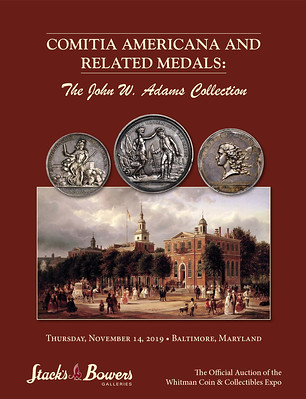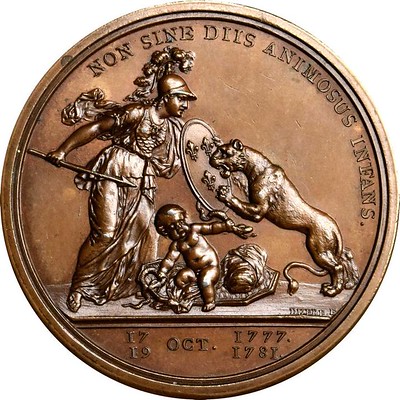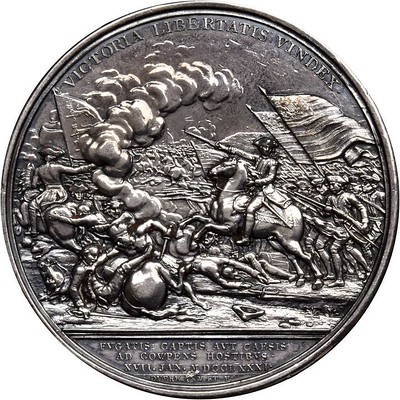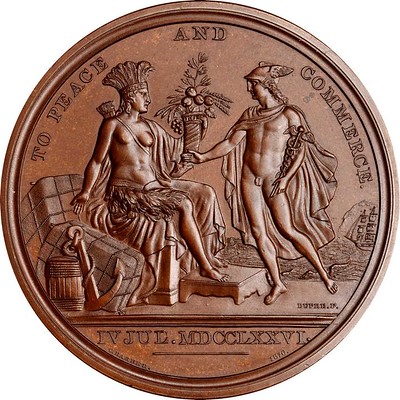
PREV ARTICLE
NEXT ARTICLE
FULL ISSUE
PREV FULL ISSUE
THE JOHN W. ADAMS COMITIA AMERICANA COLLECTIONLast week we highlighted a few of the historic medals from the upcoming Stack's Bowers sale of the John W. Adams Collection of Comitia Americana and Related Medals. With permission, we are republishing here the catalog text preceding the lots with background on Adams and his comments on the collection, and cataloguer John Kraljevich's Introduction. Thanks to Christine Karstedt of Stack's Bowers for passing the text along. -Editor John W. Adams
For nearly 40 years John was married to Mary Pierce Adams, with whom he had three fabulous children: Nicholas, John Jr. (deceased), and Alexandra. In 2000, two years after his first wife's death, he married Regina Fromhagen Adams, with whom he has enjoyed nearly 20 very happy years. His collecting career began early and over the years he assembled several notable collections. In 1982, Bowers and Ruddy offered his incredible collection of 1794 large cent varieties in a special "fixed-price" catalog. John had a great interest in medals, including Indian Peace medals (offered in Stack's 2009 Americana sale) and Betts medals (featured by Stack's Bowers Galleries in November 2015). As a proud and staunch patriot, John considers the Comitia Americana medals presented in the current catalog to be his crowning numismatic achievement. Some Words from John W. Adams On Comitia Americana Medals
An individual who picks up a Comitia Americana medal must be captivated by it, as he or she is automatically drawn into a compelling story. These were our nation's first Medals of Honor. All eleven recipients made pivotal contributions to the winning of our independence. All eleven made extreme sacrifices for a compelling cause. Anyone holding one of these objects must be aware of the thousands of patriots who, in 1776, streamed to Boston to join the battle. They must be aware of the sheer bravado entailed in the attack on Stony Point. They must be uplifted by the words: "I have not yet begun to fight." Today, what we hope to become as a nation may not be as clear as it was then. Nor are our hopes as widely shared. Simply stated, Comitia Americana medals explain to us what we may yet be and urge us forward. A Collector's Perspective on "Raw" Medals Encapsulation in plastic is a perfectly satisfactory method of storage. However, over the many years we have owned them, we have wrapped these medals in tarnish-proof tissue paper, then placed them in an inert manila envelope. This has provided safe storage and the manila envelope has served to carry all manner of relevant information. In addition to protecting against the elements, the tissue paper serves as a buffer if the medal happens to slip out of its container. How does one learn about Comitia Americana medals? A good place to begin is the book, Comitia Americana and Related Medals, by this writer and Anne Bentley. There are numerous other written sources, plus there are the human oracles – people like John Kraljevitch, Neil Musante, Tony Terranova, John Sallay and, of course, Anne Bentley. All are eminently approachable and teeming with answers. Introduction
The last of these stories bridges the gap from the useful lives of these objects — as performative largesse to Americans and Europeans alike — to collectibles. This story is as complex as the movement of militia troops through the backcountry, fraught with restrikes from original dies made in Paris, productions from the Philadelphia Mint from dies old and new, and scholarship whose veracity has rarely matched its enthusiasm. This story extends from James Mease's first description of these medals in 1821 to the modern day state of the art, encapsulated in the work Comitia Americana by Anne Bentley and John W. Adams. This catalog will not be the final say, but it is the final word on this collection. John W. Adams began assembling the medals of the Comitia Americana some four decades ago. His cabinet has been a numismatic estuary, both taking in nutrients to nourish future generations and letting go enough to let the current generation thrive. This assemblage not only inspired his masterwork, but also an endless array of talks, essays, articles, and published musings on the topic. Long-underappreciated, these medals found a welcome home with John, like so many abandoned puppies who were too cute to leave behind. As such, a novice might see it as rife with duplication, a testament that these astounding rarities are somehow more numerous than collectors think. The opposite is true. Each of these is unique in some way: die state, composition, metrology, or provenance. With John's capacious resources of both time and money, these were all the medals he was able to acquire. This is both a completist's passion and a scholar's study collection. Were any of these medals not present, his research would have been less fruitful. They represent more than 40 years of dutiful acquisitions, and in more than one case represent the entire collectible population of a particular type. The medals are now free to find new homes, with collectors who seek to capture a piece of history, or those whose scholarly curiosity has carved a niche in their cabinet that only an Adams medal can fill. Some of these medals are cognates of those in other collections, near duplicates of similar pieces that have sold in recent years. They will be easy to evaluate and compare to known populations. Others are nearly or entirely unique. They may have been acquired privately or in a great auction of the past. They will herein be described with suitable fanfare, but the ultimate evaluation will be left to the bidder: How do you price something whose place in American history is literally induplicable? How do you weigh the opportunity versus the cost, when the choice is acquiring the Adams specimen or a collection forever going without? This offering is historic, in every meaning of that sometimes tortured word. This catalog, we hope, is equal to the occasion. It would not exist without John Adams' scholarship, foresight, or decades of mentorship to its author and countless others. We're grateful for his friendship and for this opportunity. I had been in the employ of our predecessor firm, Bowers and Merena, for all of a few weeks in 2000 when Q. David Bowers came to my desk, asked me if I knew anything about Betts medals, and invited me into our Wolfeboro conference room to meet a kind gentleman named Lucien LaRiviere. While early American medals had been a long-term interest even before that, fostered by the friendship of Mr. Adams, Richard Margolis, Tony Terranova, and others – pulling open the drawers of LaRiviere's fully-laden medal cabinet revealed a brand new world to me. Michael Hodder once told me that John Ford called to correct the mistakes in my medal descriptions because he thought I was worth correcting. I've learned a lot in the last 20 years, but still have much to learn. The errors and opinions in the catalog that follows are based upon my experiences and are, thus, entirely my own. John Kraljevich
To read the earlier E-Sylum article, see:
 Wayne Homren, Editor The Numismatic Bibliomania Society is a non-profit organization promoting numismatic literature. See our web site at coinbooks.org. To submit items for publication in The E-Sylum, write to the Editor at this address: whomren@gmail.com To subscribe go to: https://my.binhost.com/lists/listinfo/esylum All Rights Reserved. NBS Home Page Contact the NBS webmaster 
|



